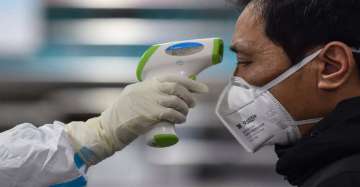The world is witnessing a rapid spread of a novel coronavirus that has infected 1,10,041 people and caused over 3,800 deaths, mostly in mainland China. In India, with three new cases confirmed on Monday in Delhi, Uttar Pradesh and Kerala the number of coronavirus cases have risen up to 43.
The new virus has been officially named the sudden acute respiratory syndrome coronavirus type 2 (SARS-CoV-2) and is known to be transmitted from wild animals to humans.
The coronavirus, or COVID-19 virus, manifests itself as a respiratory disease. The initial coronavirus symptoms include headache, fever, possibly even cough, body pain and fatigue and in some cases, shortness of breath.
The typical symptoms that are attributed to seasonal flu, but that is till things become much worse. There is no treatment for the COVID-19 virus, only treatment for symptoms.
The coronavirus disease (COVID-19) started to spread in late December 2019 at a seafood market in Wuhan City, Hubei Province, China.
At present, there is also no vaccine or treatment available to curb the coronavirus, and scientists suggest that it is still at least a year and a half away. But now, there might be some hope as scientists have discovered a possible way of stalling the spread of Coronavirus.
According to News Medical Life Sciences website, the team of scientists may have found that the SARS-CoV-2 depends on the binding of viral spike proteins to cellular receptors and on S protein priming by host cell proteases.
“SARS-CoV-2 uses the SARS-CoV receptor, ACE2, for entry and the serine protease TMPRSS2 for S protein priming. A TMPRSS2 inhibitor approved for clinical use blocked entry and might constitute a treatment option,” say the researchers.
The team of researchers identified a cellular protein called TMPRSS2, which is crucial for the entry of the novel coronavirus into lung cells. The results of the study show that the virus needs the protease, which is present in the body, to enter the cells, providing a new target for therapeutics, as per News Medical Life Sciences.
Origin and transmission of pathogenic coronaviruses.
“Our results reveal important commonalities between SARS-CoV-2 and SARS-CoV infection and identify a potential target for antiviral intervention,” the researchers wrote in the paper.
“Convalescent SARS patients exhibit a neutralizing antibody response directed against the viral S protein (Liu et al., 2006). We investigated whether such antibodies block SARS-2-S-driven entry. Four sera obtained from three convalescent SARS patients inhibited SARS-S- but not VSV-G-driven entry in a concentration-dependent manner. In addition, these sera also reduced SARS-2-S-driven entry, although with lower efficiency as compared to SARS-S. Similarly, rabbit sera raised against the S1 subunit of SARS-S reduced both SARS-S-and SARS-2-S-driven entry with high efficiency and again inhibition of SARS-S-driven entry was more efficient.,” they say.
Potential treatments for coronavirus:
A known drug called camostat mesilate works by inhibiting the protease TMPRSS2, the team has studied if it can also prevent the infection with SARS-CoV-2. Camostat mesilate is a drug approved in Japan for pancreatic inflammation. Now, the drug shows promise as a potential treatment for patients with the infection or as a protective agent against COVID-19. However, the drug still needs to be tested in clinical trials before it can be used on patients, according to News Medical Life Sciences.
ALSO READ | COVID-19: Man infected with coronavirus in Japan goes to bars to 'spread the virus'
ALSO READ | Coronavirus outbreak: Italy locks down millions in red zones, Lombardy worst hit
